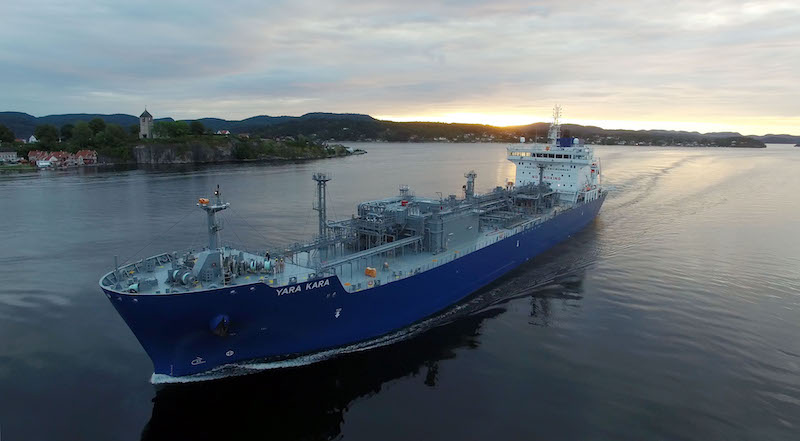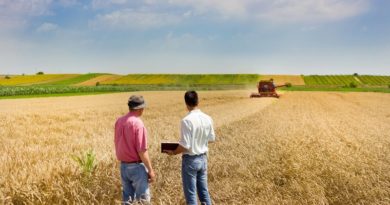
Why Fit-for-55 needs to drive innovative transformation
As Yara’s mission is to responsibly feed the world and protect the planet, we firmly support the EU’s climate ambitions. If we are not able achieve the target of a 55% reduction in net greenhouse gas emissions by 2030 and reach full carbon neutrality by 2050, we could face a climate disaster. This would likely destroy the livelihoods of many of the world’s 500 million smallholder farmers, who are already struggling with high costs and a changing climate.
However, we are optimistic and believe that climate neutrality can be achieved. That will require profoundly altering value chains and production systems. Disruptive innovations are needed that successfully reconfigure the entire business ecosystem.
The Fit-for-55 package must create space for such an innovation-driven transition, via a logical sequencing of demand creation, investment build-up and infrastructural change.
These three elements need to be implemented according to ambitious but realistic timelines, in order to enable the roll-out of innovations, which next would be scaled-up and replicated across Europe and beyond.
Synergies between the Farm to Fork Strategy and the Fit for 55 package
Yara’s core business is delivering nutrients to improve crop growth and soil health. However, to our great concern, too many crop nutrients are still lost into the environment instead of being taken up by crop roots. The Farm-to-Fork’s ambitious objective to halve fertilizer losses is not only necessary but also entirely possible, according to our own crop nutrition experts, by supporting farmers in their daily tasks via the right products, digital tools and advisory services. Furthermore, it is also the best approach for the climate, since reducing nutrient losses simultaneously addresses the carbon footprints of production and end-use. When the soil has become depleted of organic matter, sound nutrient management helps to restore the soils’ vast potential to store carbon. Promoting the targeted and combined use of organic and mineral fertilizers and scaling up precision farming are the major pathways for meeting the F2F ambition and improving European farmers’ profitability.
The climate transition is a business opportunity
Ammonia, today produced from natural gas and oxygen, is the base chemical for manufacturing our nitrogen fertilizers; here Yara International is a global leader in ammonia production and trade. Clean ammonia, tomorrow manufactured with green or blue hydrogen, is an essential part of the solution to drive full decarbonization of the fertilizer industry. And the potential of clean ammonia doesn’t stop here.
Clean ammonia as a shipping fuel is the optimal solution to decarbonize long-distance shipping. And it can also serve as a hydrogen carrier to transport clean energy. Clean ammonia is a great option to drive decarbonization of the economy and it opens up entirely new avenues for business growth.
Realizing opportunities through a sequence of business innovations
There is broad agreement that Europe’s economy needs a profound transformation. Success will depend on so-called “disruptive innovations” which conquer the market over time by altering value chains and production systems. Novel solutions must first be made available and commercially tested, which typically makes these solutions initially dependent on niche high-value applications. To scale up, basic infrastructure is to be put in place.
Demand will then develop in step with the roll-out of a new business ecosystem and is contingent on how the market values the innovation. Finally, the disruptive innovation can become the new reference after a short or longer transition.
To reach the ambitious targets we need speed in this transition.
For Yara, carbon-neutral ship transport and premium low-carbon food products are expected to be early adopters of clean ammonia in the initial phase of its transformation journey.
As first movers, Yara will depend on supportive framework conditions to enable scale effects and avoid a first mover disadvantage. Mass-market demand for climate-friendly fertilization practices will develop next, based on consumers’ pull up to the end of the food value chain. The new production installations will subsequently outcompete existing infrastructure depending on their ability to serve local and export markets.
Fit-for-55 must enable this innovation sequence or else it will fail
The Fit-for-55 proposals will certainly become subject of intense paragraph-by-paragraph negotiations. For businesses, it is crucial that during this process the package remains coherent and comprehensive. Yara believes that the different timelines of the new legislation for CBAM, ETS, RED, LULUCF and others need to be reevaluated from the perspective of a demand-driven innovation journey transforming value chains.
Rather than pushing renewables into industry, supply and demand for renewable products have to be developed in conjunction, which will convince investors to finance these investments and complement EU infrastructure funding.
The design of a carbon border adjustment should take into account global competitiveness of Europe’s low-carbon value chains rather than only regulating the import of a limited set of products. Such an approach will enable businesses to transform rather than only adjust to a new pricing environment. At the same time, businesses must be incentivized by consumers or regulators to collaborate on decarbonizing their value chains. The supporting regulations should develop in step with the roll out of the new economic system. This can be done without slowing down the Fit-for-55 reform. Instead, it will accelerate the disruptive transformation we depend on. It is ambitious, but in our view also feasible.




